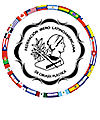







The Republic of Panama is an isthmus located at the center of the Americas, connecting Central and South America. It is bordered to the north by the Caribbean Sea, to the south by the Pacific Ocean, to the east by Colombia, and the west by Costa Rica.
It covers an area of 275,000 square kilometers and has a population of 4.4 million. Its ethnic, musical, and culinary diversity makes it a true melting pot unique worldwide.
Panama's climate is humid tropical monsoon with a dry season from December to April and a rainy season from April to December. The average temperature is 27 degrees Celsius, ranging from 31 during the day to 25 at night. Almost all establishments have air conditioning, with temperatures ranging between 18 and 22 degrees Celsius.

The local time belongs to the Eastern Standard Time Zone (GMT-0500) with no variations throughout the year.

Spanish is the official language of Panama; however, many of its residents and most hotel and tourist destination employees also speak English.

Panama City consists of three distinct areas. The first, called Panamá Viejo, was the oldest city in the New World on the Pacific coast and was founded on August 15, 1519, by Pedro Arias de Ávila. The city later moved to what is now known as Casco Antiguo, and between these two lies Modern Panama. Panama City has a population of 1.5 million inhabitants.

The Panamanian Balboa (B/.) is the official currency. The Balboa only exists in coin form. The U.S. dollar circulates as the official paper currency and is on par with the Panamanian Balboa at a one-to-one ratio. Visa, Mastercard, and American Express credit cards are accepted at most establishments.
Tocumen International Airport is considered the hub of the Americas with daily connections to all of America and Europe.
Requirements for Traveling to Panama:
For more information, please visit the following link:

Panama City, the capital of Panama, is a modern city framed by the Pacific Ocean and the artificial Panama Canal. On the Pacific side, there are two visitor centers, one at the Miraflores Locks and another at Cocoli, where you can watch ships pass through the canal, a vital commercial route connecting the Atlantic and Pacific Oceans. The Casco Viejo, the historic cobblestone district, is renowned for its colonial-era sites, bougainvillea-covered streets, cafes, and bars.